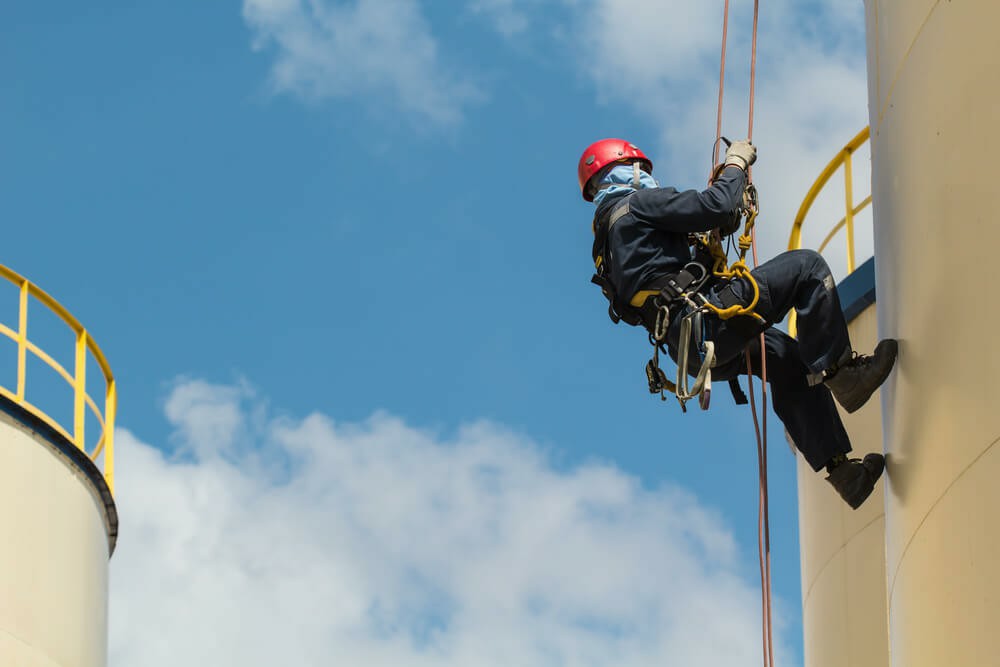Harnessing the Power of Cutting-Edge Technology for Safer Working at Heights Training
In today's dynamic work environment, safety remains a top priority, especially for those engaged in Working at Heights. The integration of advanced technology into training programs is not just a trend; it's a necessity for optimizing workplace safety and ensuring workers are adequately prepared for the risks associated with elevated tasks. This blog post delves into the latest technological advancements that are enhancing Working at Heights training, including smart helmets, IoT sensors, and AI-powered risk assessments.
The Importance of Safety in Working at Heights
Working at Heights poses significant risks, which makes comprehensive training and safety measures critical. The potential for falls and accidents necessitates a proactive approach to worker safety. Traditional training methods have been effective, but the infusion of new technologies is enhancing outcomes, making training more engaging and effective.
Innovations Shaping Working at Heights Training
Let's explore some of the key technologies transforming Working at Heights training:
1. Smart Helmets
- Real-Time Monitoring: Smart helmets equipped with augmented reality (AR) can provide visual instructions, guiding workers through complex tasks safely and efficiently.
- Environment Assessment: These helmets can assess the working environment, alerting users to potential hazards, such as unstable surfaces or deteriorating weather conditions.
- Communication Features: Integrated communication systems in smart helmets enhance collaboration among team members and ensure a quick response to emergencies.
2. IoT Sensors
- Fall Detection: IoT sensors can detect falls and send immediate alerts to supervisors or first responders, thereby reducing response time and improving outcomes.
- Wearable Safety Devices: These devices can monitor vital signs and fatigue levels, ensuring workers are fit for duty before engaging in high-risk activities.
- Data Analytics: By collecting data on worker movements and environmental conditions, IoT devices can help identify trends and areas for improvement in safety practices.
3. AI-Powered Risk Assessments
- Predictive Analytics: AI systems can analyze historical data to predict potential safety hazards, allowing businesses to take preventive measures before incidents occur.
- Customized Training Programs: AI can personalize training experiences based on individual worker performance, learning styles, and unique job requirements, leading to more effective knowledge retention.
- Automated Reporting: AI tools can help streamline the process of reporting incidents and analyzing safety data, significantly enhancing safety governance.
Benefits of Integrating Technology into Working at Heights Training
The inclusion of advanced safety technology in Working at Heights training offers numerous benefits:
- Increased Engagement: Utilizing interactive technologies like virtual reality simulations keeps trainees engaged and enhances learning outcomes.
- Improved Safety Compliance: Technology-assisted training programs help ensure compliance with safety regulations and standards.
- Reduction in Workplace Accidents: With real-time monitoring and predictive systems, businesses can significantly reduce the likelihood of accidents occurring.
- Cost Savings: By preventing accidents and enhancing training efficiency, businesses can save on costs associated with workplace injuries and lost productivity.
Implementation Strategies for Businesses
To effectively integrate these technologies into Working at Heights training, businesses should consider the following strategies:
- Conduct a Needs Assessment: Evaluate current training programs to identify gaps where technology can enhance learning and safety.
- Invest in Quality Technology: Choose reliable, proven technology solutions that fit the company's specific safety requirements.
- Provide Training for Trainers: Ensure that trainers are well-versed in the use of new technologies to facilitate effective knowledge sharing with employees.
- Continuous Evaluation: Regularly review and adapt training programs based on feedback and technological advancements to keep pace with emerging safety demands.
Success Stories of Technology in Working at Heights Training
Several companies have already incorporated these technologies with remarkable success. For instance:
- Construction Firm X: Implemented smart helmets that led to a 30% reduction in fall-related incidents.
- Utility Company Y: Utilized IoT sensors to enhance worker safety on tall structures, resulting in improved worker confidence and fewer safety violations.
Conclusion: A Call to Action for Safer Working Environments
Embracing advanced technology in Working at Heights training is no longer optional—it's essential for ensuring a safer working environment. By integrating smart helmets, IoT sensors, and AI-driven risk assessments into your safety programs, your business can enhance training effectiveness, boost compliance, and significantly reduce accident rates.
Take the first step toward a safer workplace today. For more information about our Working at Heights training courses available in Dublin, Cork, and Galway, contact us at [email protected]. Together, we can create a safer tomorrow for all workers at heights.



 349,500 Offered Certificates
349,500 Offered Certificates
 24/7 Online Training
24/7 Online Training
 Money Back Guarantee
Money Back Guarantee
 Fully Accredited Courses
Fully Accredited Courses
